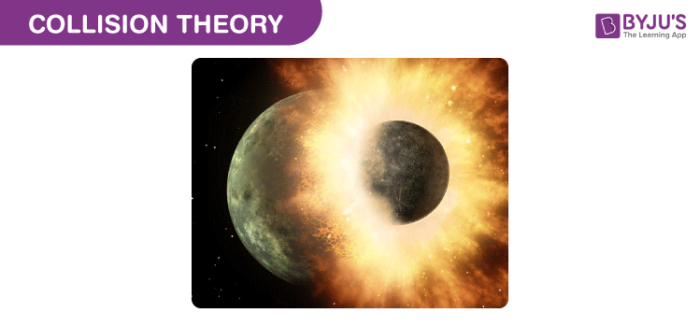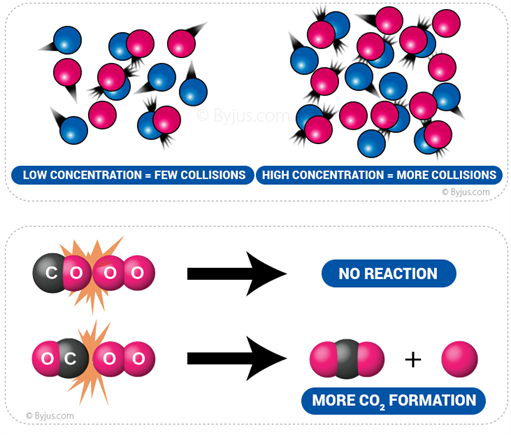
What is Collision Theory?
The collision theory states that a chemical reaction can only occur between particles when they collide (hit each other). The collision between reactant particles is necessary but not sufficient for a reaction to take place. The collisions also have to be effective. It is important to understand the exact nature of an effective collision since this determines whether particles react with each other and form new products.
Molecular Collisions
- The more molecules are present, the more collisions will happen.
- Molecules must collide before they can react.
- To effectively initiate a reaction, collisions must be sufficiently energetic
(kinetic energy) to bring about this bond disruption. - As the temperature rises, molecules move faster and collide more vigorously,
greatly increasing the likelihood of bond cleavages and rearrangements. - Most reactions involving neutral molecules cannot take place at all until they have acquired the activation energy needed to stretch, bend, or otherwise distort one or more bonds.

Model: Collision theory
In the picture below, the cricket bat represents Reactant A and the cricket ball represents Reactant B. A reaction will only be successful if the batter hits a boundary. If the batter does not hit a boundary, the reaction will be considered a failure.

Scenario 1: The bowler bowls a fastball down the middle of the pitch. The batsman takes a mighty swing and totally misses the ball.
Scenario 2: The bowler bowls an off-speed delivery and the batsman checks his swing. The batsman just barely makes contact with the ball, and it dribbles down in front of the batsman’s feet into foul territory.
Scenario 3: The bowler bowls a curveball that looks like it might catch the outside corner of the pitch. The batsman swings with all his strength, but the bat grazes the underside of the ball, and the ball skews off to the right, flying into the crowd. The umpire yells, “Foul ball, still two strikes!”
Scenario 4: The bowler bowls another pace delivery down the middle of the pitch. The batsman swings and wallops the ball high into the air and the ball clears the centre field wall that reads 410 feet. The umpire signals a six.


Comments